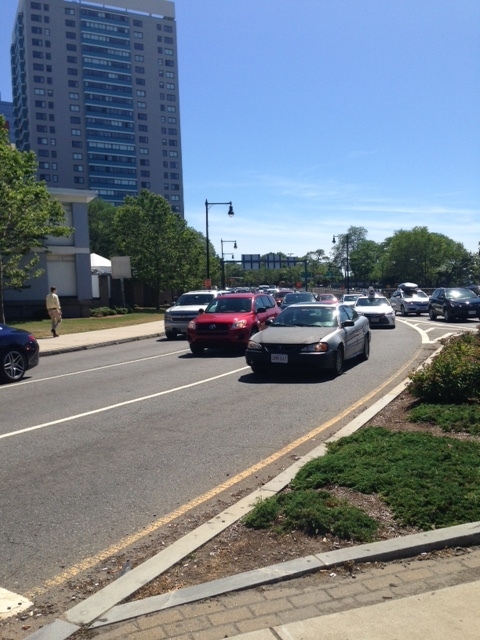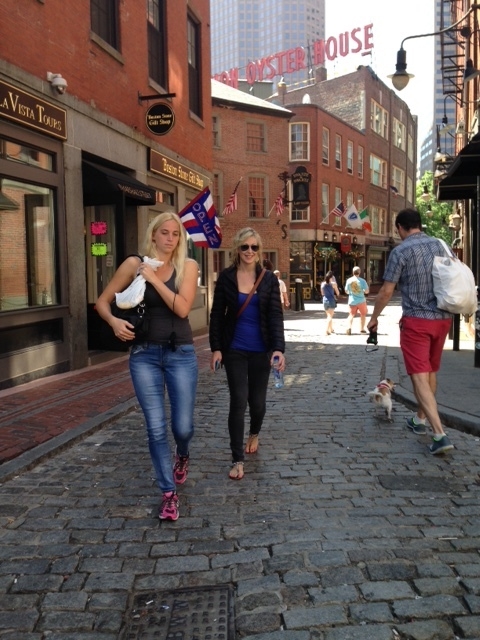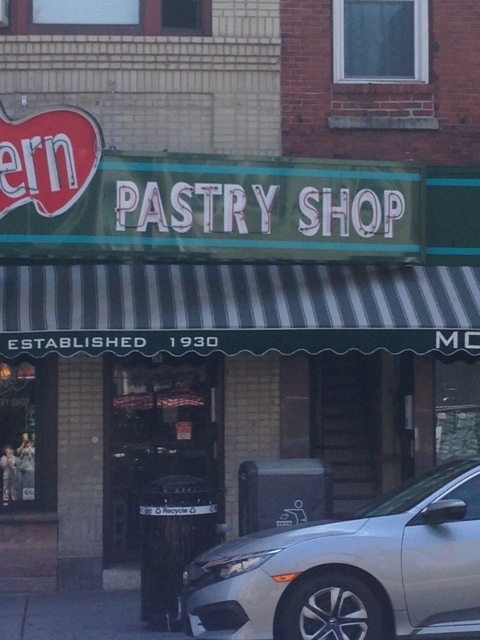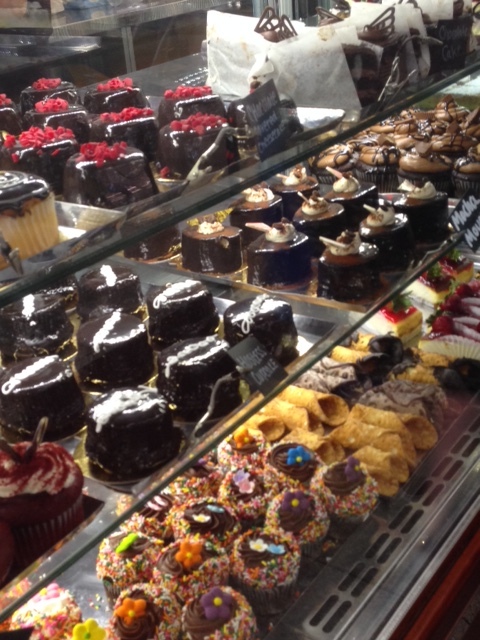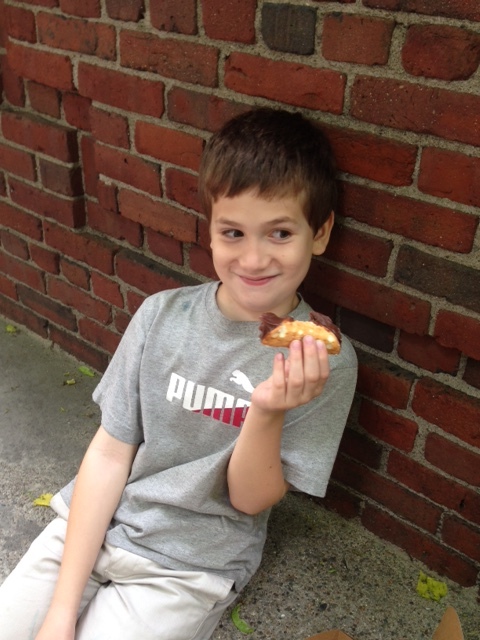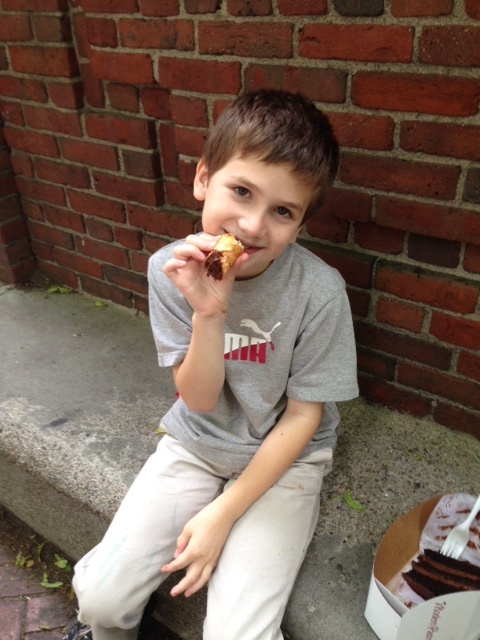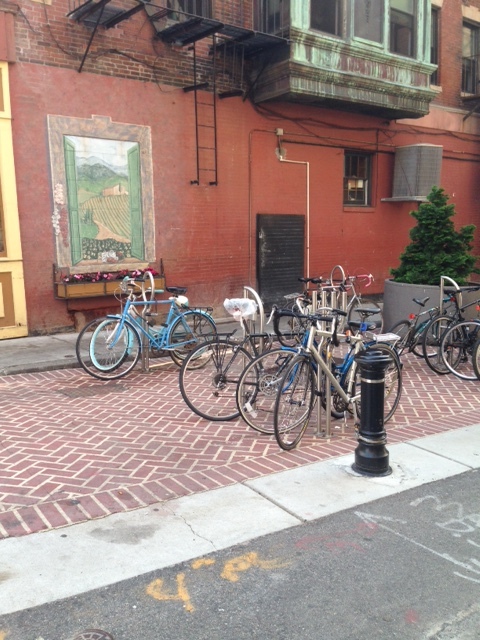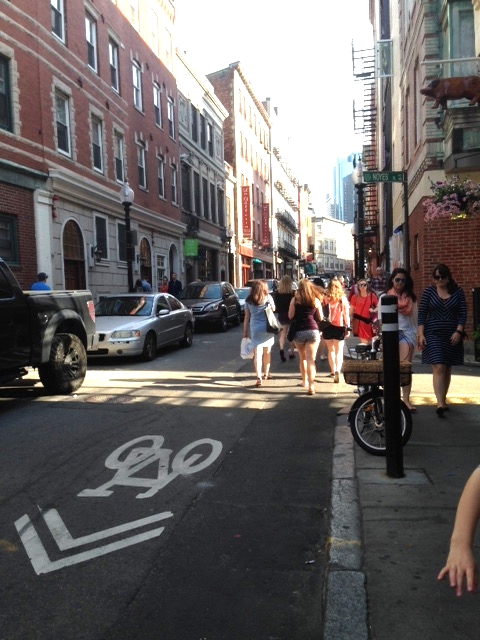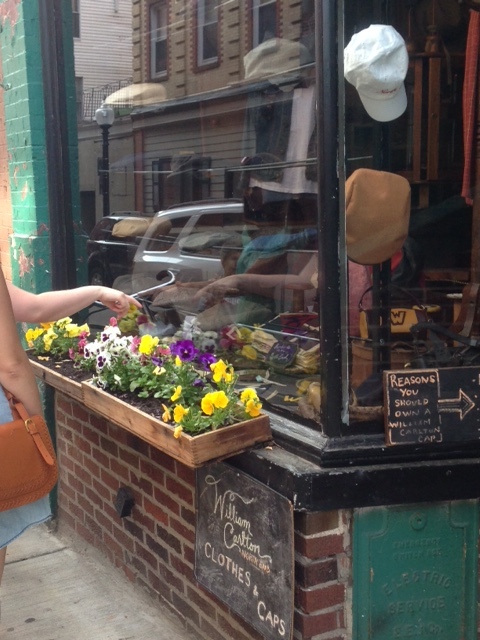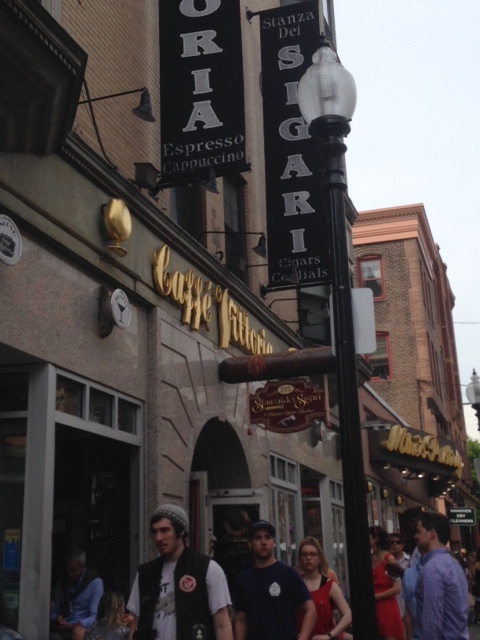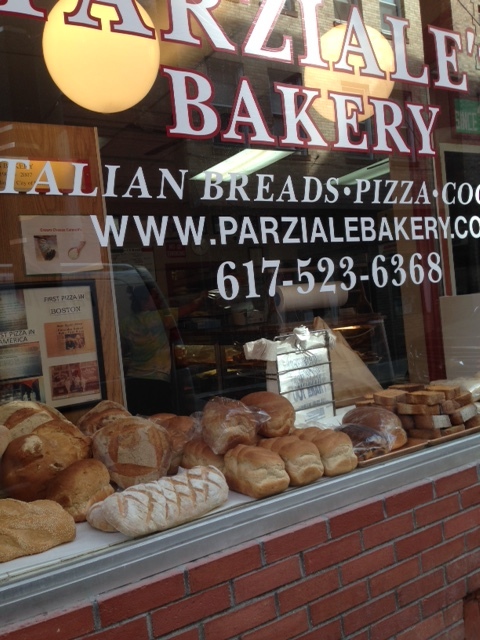In the last blog post, we outlined two urban planning models "duking it out" in cities across the country in the age of automobiles and suburbs after World War II. What should our cities look like? What are the ingredients to building a thriving urban ecosystem? Sometimes it's easier to understand the differences between the two models if we take a step away from Worcester and go somewhere else. Today, let's head to two very distinct neighborhoods in Boston. Please observe the two photos down below carefully. Here is question #1: One photo is an example of the Robert Moses Urban Renewal model of development. The other photo highlights the Jane Jacobs Neighborhood Rejuvenation ideal. Can you guess which is which? Question #2: Choose your preference. Where would you rather live or visit?
Here is the answer to question #1. Top photo is the kind of place that Robert Moses would have built. The Charles River Park Complex is ringed by Storrow Drive, a major highway and is comprised of many residential "towers in the park". We got off the "T" at the Science Park stop across the street and could find no pedestrian access road to get to Charles River Park. We almost killed ourselves crossing three areas of four lane highways. I had to yell out, "STOP" to my children several times and almost didn't survive the stress of it all just to get there!
The bottom photo is a shot of a street on the outskirts of the North End of Boston, one of the oldest neighborhoods in the city and the home to the close knit Italian community (and the yuppies who are moving in!) Pedestrians rule here! One will notice people walking on the cobblestone road only big enough for one lane of traffic. One will walk past a plethora of interesting little shops on the street level and apartments up above that provide mixed use of residential and retail shared space.
So, yes, let's go visit these two neighborhoods to compare and contrast. In the back of your mind, you might begin to ponder, "where would I rather live or visit?" There is no "right" answer to that question.
Strolling Through the Charles River Park Complex or the Former West End
"If you lived here, you'd be home by now."
-sign in front of Charles River Park complex on the side of Storrow Drive
The developers of the huge Charles River Park were trying to entice the wealthy suburban commuters stuck in traffic. Come back to the city! Don't sit in traffic! You could be home by now! And for the most part, the strategy worked. This complex became an urban playground for those who could afford to pay the price.
My children and I finally crossed the highway and entered the parking lot area in front of Whittier Place. I started to get memories and flashbacks. I had not strolled this "neighborhood" for over thirty five years, but when I was in fifth grade, I practically lived here. My best friend, Lois (Nichole) Gantshar lived on one of the top floors of Whittier Place with her stockbroker father, opera singing mother and brother. I bounced up and down on the swing hanging from her ceiling. We played pretend characters living in the 1950s. I loved hanging out with Lois but here is what I remember of life for a kid living in the Charles River Park complex in the 1970s. It was boring! No one really went outside to walk around the green, empty lawns unless one had a dog that needed to go out. We rode the elevators up and down and sometimes, we walked over to the Science Museum to check out the exhibits on reproduction or drugs.
I'm getting a memory of swimming at this complex pool club. Did I go here with Lois when we were best friends in fifth grade? Living here was like living in an exclusive country club.
Charles River Park is walkable within the interior of the complex. Note the pedestrian walkways adjacent to open space areas with grass, plantings and trees. This complex is primarily composed of large skyscraper residential buildings ringed by outer highways and inner pedestrian corridors.
We only noticed a tiny bit of mixed use. Most of the superblocks are comprised of residential towers, parking lots and recreational uses (pool, tennis, basketball courts). Here is a dry cleaner, nail salon and small restaurant, the only retail we saw in the interior of the complex during our long walk.
Parking lots on the outer rings show how auto-centric this project was from the beginning.
Tennis courts next to high rise provide recreational amenities for the wealthy.
In case you forget that this is indeed private property and poor people are not allowed here...
In our blog post regarding Robert Moses' model, we declared the emphasis on low density. However, even though there is so much open space in this project, one could claim that there is high vertical density here. These high rise towers really pack in the people living there.
This development was no doubt inspired by the ideals of the Modernist architect, Le Corbusier who laid out a dramatic vision for the modern city - vertical skyscrapers placed in tracts of green space and surrounded by highways. Indeed, Le Corbusier presented his idea to raze two miles of downtown Paris to create his "towers in the park" plan in 1925. Thank God the city did not embrace his vision! However, his ideas migrated over to the United States so that one will encounter these kind of urban renewal projects throughout many major cities. Charles River Park is a classic example of Corbusierian ideas.
Oh my! More memories are coming to me of a later time. So, the strategy really did work. Suburbanites did start to ditch the houses and expansive lawns for exciting life in the city. When I was in high school, Leslie Woron's mom left her marriage and home in Brookline for the exciting arts life in Boston. Leslie lived here with her. The father of my best friend, Lauren Slater, left the huge mansion in Newton to set up his bachelor pad here. He was often away and Lauren had the key! We renamed her dad's place, "the bachelorette pad" and had a grand time using her dad's credit account at the convenience store around the corner. We would load up on Tab and Pepperidge Farm chocolate cake, order pizza in, dream up schemes of going to visit Washington, DC or make prank phone calls. We were two teenagers without any adult supervision who always found a way to get into a bit of trouble, but that is a story for another day.
In case you want to remember what this neighborhood looked like before urban renewal, you can see photos of the West End displayed at the Science Park "T" Station.
We may have enjoyed our stroll through the country club complex of the wealthy but there is a long, upsetting neighborhood history. In 1958, the Boston Redevelopment Authority sent out eviction notices to over 2700 familes of the West End. The neighborhood was earmarked for "urban renewal". The land was to be completely cleared to make way for Charles River Park, Mass General Hospital and Government Center. For years, wealthy Boston Brahmins had been trying to make the case that this vast neighborhood was nothing more than a "slum". The city stopped collecting garbage. Rumor had it that journalists overturned trash cans to make the neighborhood appear blighted. Even though residents organized to save the West End, they lost the battle and were displaced from their homes and the social bonds they found in their community.
The West End of old was the perfect Jane Jacobs type of neighborhood with winding streets, a dense collection of crowded residences, businesses, schools, places of worship and an eclectic mix of primarily Italian and Jewish working class immigrant residents. It was a neighborhood where people felt extremely close and connected. In his famous book, Urban Villagers, sociologist Herbert Gans documented the type of social bonds among the Italian Americans who lived in the West End in the 1950s. Even Leonard Nimoy of Star Trek mourned the destruction of his childhood home community. Former West Enders felt so connected to each other that they continued to stay in touch through published newsletters and reunions. How many of us can say this about our neighborhoods? Would you keep in touch with all your neighbors fifty years from now? Outsiders may have called this a slum but the people who lived there knew better. It was home and community and it was destroyed in one sweep at the end of the 1950s.
Strolling Through the North End
If you want to get an idea of what the West End was like as a neighborhood before the bulldozers razed it, you can head on over to the North End. This Italian neighborhood is so "Jane Jacobs" that she features it as a prime example of a vibrant, successful urban space. In the North End, over 10,000 residents are living in an area under 250 acres (less than a mile), making it one of the oldest and most densely populated neighborhoods in the city. Jane Jacobs applauded this high density and mixed uses that resulted in busy and safe sidewalk life, low crime rates and heavily bonded social relationships.
Our visit began as we exited the Haymarket subway station, just a one minute walk to the North End. It was a Saturday and we were greeted by a full block of stalls, merchants selling fruits, vegetables, fish, meat and spices at the outdoor historic market (Haymarket) that happens every Friday and Saturday.
Bikes everywhere and bikes to share and rent too
Streets are crowded with pedestrians. There are so many "eyes on the street" that residents tell us that they are never afraid even walking around at night. Notice the brick trail laying out the route of the Freedom Trail and the young man playing his violin for change.
These men were hanging out, drinking coffee at the shop selling gelato and cappuccino. We asked them where the best pizza in town would be. One of the men in his thick Italian accent, told us to go across the street to a pizzeria where the locals go. I'll bet these men have known each other for years.
It was indeed very good pizza!
This is a classic example of Jane Jacobs type of mixed use - retail on the first floor and residential units up above. Note the small scale of the buildings. There are no skyscraper towers in this neighborhood as there are in Charles River Park.
This photo was taken directly across from the Paul Revere House. This is a neighborhood for walkers and bikers as you can clearly see from the "no parking" sign above the image of walkers and the bicycle tied to the pole below. Check out the sunbathers in the pedestrian plaza in the center of the square and the streets lined with old brick cobblestones. All throughout this dense, mixed use neighborhood, you will see the storefronts on the first floor and the residential units above.
In just a square mile, you can find anything you need - clothes, restaurants, schools, churches. We even saw a small college and a performing arts center as we meandered the narrow streets.
In case you forget that this is an Italian neighborhood...
Note the very narrow streets. This neighborhood was built way before cars were even invented. Here, the pedestrians rule!
Streets here are wide enough for one lane of traffic and a parking lane. Everywhere there are signs painted on the road indicating roads are designated for bike travel. This is not just a tourist neighborhood. Real people live here. Note the laundromat for neighborhood residents.
And how can you visit the North End without buying cannoli? There was too long a line at the touristy Mike's Pastry so we headed on over to the Modern Pastry Shop.
Bicycles, bikers and designated bike lanes everywhere. We are in bicycle heaven!
We found everything we could want - clothing stores, cap stores, bakeries, little restaurants and pastry shops, even a cigar shop. We loved walking around because we never knew what we would find around the corner.
Then we got hungry again and ate some more pizza!
I smell the whiff of gentrification! There is a high demand for housing in these kind of Jane Jacobs' type of neighborhoods. People are drawn to living in a place where you can reach everything you need by foot and where there are signs of active street life, but the demand is outrunning the supply. We stopped in front of a neighborhood real estate office. A studio apartment in the North End is going here for $1875 a month! Who can afford this?
